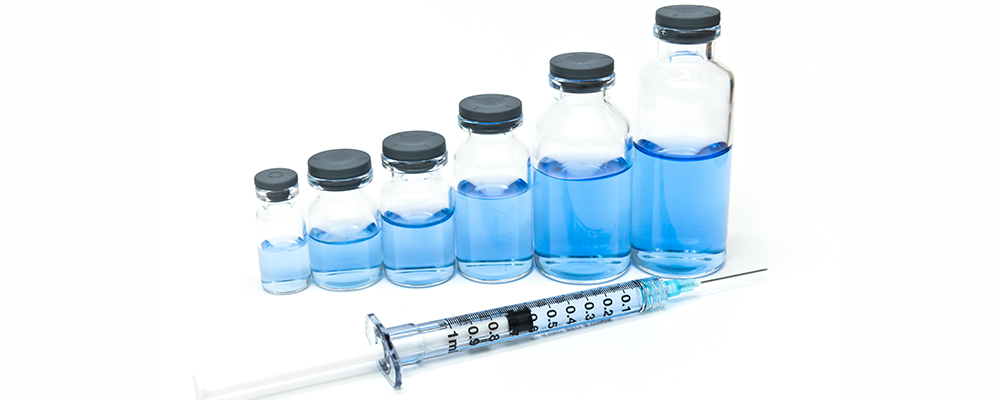
Introduction
With patents expiring for many successful biologic drugs, researchers are focusing on developing drugs that are competitive in pricing and affordable to patients who require critical medications for managing chronic diseases.
A biosimilars medicinal product is a replica of the innovator medicinal product with similar safety and efficacy profiles.1,2. Some of the popular biosimilars are monoclonal antibodies biosimilars for cancer therapeutics, erythropoietin biosimilars, insulin biosimilars, interferon biosimilars, granulocyte colony-stimulating factor biosimilars, and human growth hormone biosimilars.
Small Molecules Versus Large Molecules
Small molecules are chemically synthesized and are simple, well-defined molecules. They can be characterized fully and have highly predictable functions.
On the other hand, biologics are large molecules that are protein-based and synthesized from highly complex biological sources. As living systems are used in the manufacturing of biologics, the process requires sound technological expertise.
Despite large molecules posing problems such as extreme sensitivity to process and handling as well as immunogenicity, their proven efficacy and precision in targeted therapy is making biologics popular in the treatment of many non-communicable and chronic diseases such as blood disorders, cancer, inflammatory diseases, and diabetes.4
Current Scenario of Biosimilars
Approximately 32 biologics will lose patent rights by the year 2019, the combined sales of which are estimated to be around $ 51 billion.6 However, developing biologics is a tedious and complicated process, with many of the products taking approximately 10 to 15 years to come into the market.7
Studies have indicated that the market will continue to grow at a rate greater than 20% due an to increase in the incidence of chronic conditions leading to increased utilization of biologics.
Patent expiration of a number of best-selling biologicals opens the door for the approval of biosimilar versions of the original products. These biosimilars are usually 20-30% cheaper than the innovator product. The European Union (EU) has approved more than 20 biosimilars since they provided their consent to use the first biosimilar, somatropin, in 2006.10
It is anticipated that the global biosimilars market will cross $35 billion by the year 2025 with a compound annual growth rate (CAGR) of 33%.
Challenges in Developing Biosimilars
➔ Difference in Regulatory Approval Processes Between Countries:
In the EU, the interchangeability of biosimilars does not require additional regulatory evaluation if the biosimilars demonstrate similar activity as the original product with no additional risk to the patient.
However, this is not acceptable by the US regulatory body that mandates complex and costly trials to demonstrate the interchangeability of biosimilars.
In addition, USFDA limits the use of extrapolation of data. The additional regulatory requirement not only increases the timeline for biosimilars development but also increases the cost and impedes the manufacturer’s enthusiasm in pursuing biosimilars in the long run.3,13,14
➔ Development and Timelines Challenges:
It is estimated that the cost of developing biosimilars can go up to $ 100 million with a development time of 5-9 years, excluding the cost of failure.15 The Pharmaceutical Research and Manufacturers of America (PhRMA) estimated the cost of developing a biosimilar to be approximately $ 375 million as compared to $1.2 billion to develop a new biologic.
However, the development timelines for biosimilars are relatively shorter than that of biologics. The Phase I and Phase III stages for biosimilars can be shortened, while the phase II stage can be skipped due to the established therapeutic efficacy and safety of the biologic.16
➔ Clinical Challenges:
Immunogenicity is a potential risk with biosimilars. Hence, stringent risk management plans and post-marketing surveillance of the drug should be in place to monitor any adverse events.13,17
Another challenge is patient acceptance of biosimilars due to limited knowledge or awareness about such products. Concerted efforts have to be made to ensure that the patient understands the basic principles of biosimilars and their ability to exert therapeutic efficacy at much lower costs than their biological counterparts.18
➔ Analytical Challenges:
The physiochemical and structural comparability of biosimilars with the original product is difficult due to their inherent heterogeneity. Analytic techniques such as mass spectroscopy, chromatography, or electrophoresis can be used to address some of the hurdles by: 13,17,19
☉ Comparing biosimilars lots against a reference product to assess the pharmacokinetics and pharmacodynamics of the biosimilars.
☉ Understanding multiple mechanisms of actions involved by in vitro characterization
☉ Choosing of bioassay should be a case-by-case decision depending upon the specificity and sensitivity of the biosimilars.
➔ Commercialization and Marketing Challenges:
Major pharmaceutical companies sometimes block other small players from producing biosimilars by creating restricted distribution agreements leading to the unavailability of the innovator product sample.
In addition, patents are abused to prolong the monopoly of a brand name, thereby delaying patient access to more affordable and life-saving biosimilars.13
➔ Establishing Concrete Guidelines for Market Approval:
The USFDA and regulatory bodies of other countries are yet to establish streamlined guidelines for marketing approval of biosimilars.3,13,14
The Way Forward
➔ Biosimilars manufacturers can promote optimization by:5
☉ Building trust and confidence between the payers and providers by reimbursement for biosimilars and providing cost-saving alternative solutions for long-term treatment.
☉ Engage with the regulatory authorities during the early stages of the development of biosimilars to capture their interest.
➔ Enabling extrapolation of data by regulatory authorities of the country is one of the crucial steps that can push the development of biosimilars. This, in turn, helps establish fair market trade.5
➔ Contract research organizations (CROs) can lend expertise to sponsor companies:20
☉ To develop a holistic, tailor-made, and optimal clinical development plan (CDP) without losing focus on the commercial aspect of the business
☉ By using therapeutic and regulatory expertise, real-world data, and market access strategies to influence access to biosimilars and to establish competitive pricing.
➔ By forging strategic global alliances and enhancing their expertise in biosimilars development.
Conclusion
Advanced manufacturing processes, limiting of patent litigations, and change in physicians’ and patients’ perception towards biosimilars can mitigate the current level of complexity and ambiguity involved in promoting biosimilars.10
In addition, the overall cost of biosimilars can also be reduced by involving more number of players, these measures will allow for safer and wider access of biosimilars products to patients around the globe.
Sources
- 1. Weise M, Bielsky MC, De Smet K et al. Biosimilars—why terminology matters. Nature Biotechnology. 2011 Aug;29:690-3. https://www.nature.com/articles/nbt.1936
- 2. https://bioprocessintl.com/manufacturing/biosimilarss/opportunities-challenges-biosimilars-development/ Accessed on March 13, 2019.
- 3.Rozek RP. Economic Aspects of Small and Large Molecule Pharmaceutical Technologies. Advances in Economics and Business. 2013;1(3): 258-69.
- 4.CN Chan J and TC Chan A. Biologics and biosimilars: what, why, and how? ESMO Open. BMJ Journals. 2017;2(1):e000180.
- 5.Oo Charles and Kalbag SS. Leveraging the attributes of biologics and small molecules, and releasing the bottlenecks: a new wave of revolution in drug development. Expert Review of Clinical Pharmacology. 2016 Mar;9(6):747-9.
- 6.Blackstone EAn and Joseph JR PF. The Economics of Biosimilars. Am Health Drug Benefits. 2013 Sep-Oct; 6(8): 469–478. https://www.ncbi.nlm.nih.gov/pmc/articles/PMC4031732/
- 7.Blackstone EA and Joseph JR PF. Biologics and Biosimilars. The possibility of encouraging innovation and competition. The SciTech Lawyer. American Bar Association. 2015;11(3).https://pdfs.semanticscholar.org/bf63/c072c5019dbb294f85c8f865adbcc0bd698a.pdf
- 8.Bressler B and Dingermann T. Establishing a new marketplace for biologic therapy with biosimilar agents: importance of extrapolation of data. Biosimilars. 2015;5:41-8.
- 9.http://www.gabionline.net/Biosimilarss/General/US-67-billion-worth-of-biosimilars-patents-expiring-before-2020 Accessed on March 13, 2019.
- 10.Gupta SK, Chaudhari P, and Nath R. Opportunities and Challenges in Biosimilars Development. Bioproces international. https://bioprocessintl.com/manufacturing/biosimilarss/opportunities-challenges-biosimilars-development/ Accessed on March 13, 2019.
- 11.https://www.variantmarketresearch.com/report-categories/pharmaceuticals/biosimilarss-market Accessed on March13, 2019.
- 12.http://www.mabxience.com/products/biosimilars/global-biosimilars-market/ Accessed on March 13, 2019.
- 13.Breaking through on biosimilars. The Biosimilars Council. http://biosimilarsscouncil.org/wp-content/uploads/2018/05/Breaking-Through-on-Biosimilarss-Biosimilarss-Council-White-Paper.pdf Accessed on March 13, 2019.
- 14.Misra M. Biosimilars: Current perspectives and future implications. Indian Journal of Pharmacology. 2012 Jan-Feb;44(1):12-4.
- 15.https://www.pfizerbiosimilarss.com/biosimilarss-development Accessed on March 13, 2019.
- 16.http://www.pharmtech.com/clinical-and-cost-considerations-developing-biosimilars Accessed on March 13, 2019.
- 17.Cai XY, Wake A, and Gouty D. Analytical and bioanalytical assay challenges to support comparability studies for biosimilar drug development. Bioanalysis 2013 Feb;5(5). https://www.future-science.com/doi/full/10.4155/bio.13.1
- 18.http://ascopubs.org/doi/full/10.1200/JOP.2017.025734?url_ver=Z39.88-2003&rfr_id=ori:rid:crossref.org&rfr_dat=cr_pub%3dpubmed Accessed on March 13, 2019.
- 19.https://www.biosimilarsdevelopment.com/doc/analytical-challenges-in-biosimilars-development-0001 Accessed on March 13, 2019.
- 20.https://www.iqvia.com/-/media/library/white-papers/integrated-approach-to-biosimilars-dev-and-commerc.pdf?la=en Accessed on March 13, 2019.
Disclaimer:
The information contained on this article is intended solely to provide general guidance on matters of interest for the personal use of the reader, who accepts full responsibility for its use. Accordingly, the information on this article is provided with the understanding that the author(s) and publisher(s) are not herein engaged in rendering professional advice or services.
As such, it should not be used as a substitute for consultation with a competent adviser. Before making any decision or taking any action, the reader should always consult a professional adviser relating to the relevant article posting.
While every attempt has been made to ensure that the information contained on this article has been obtained from reliable sources, Veeda Clinical Research is not responsible for any errors or omissions or for the results obtained from the use of this information.
All information on this article is provided “as is,” with no guarantee of completeness, accuracy, timeliness, or of the results obtained from the use of this information, and without warranty of any kind, express or implied, including, but not limited to warranties of performance, merchantability, and fitness for a particular purpose.
Nothing herein shall, to any extent substitute for the independent investigations and the sound technical and business judgment of the reader. In no event will Veeda Clinical Research, or its partners, employees, or agents, be liable to the reader or anyone else for any decision made or action taken in reliance on the information on this article or for any consequential, special or similar damages, even if advised of the possibility of such damages.
No part of this publication may be reproduced, stored in a retrieval system, or transmitted in any form or by any means, mechanical, electronic, photocopying, recording, or otherwise, without the prior written permission of the publisher.
For information, contact us at:
Veeda Clinical Research Private Limited
Vedant Complex, Beside YMCA Club, S. G. Highway,
Vejalpur, Ahmedabad – 380 051,
Gujarat India.
Phone: +91-79-3001-3000
Fax: +91-79-3001-3010
Email: info@veedacr.com

